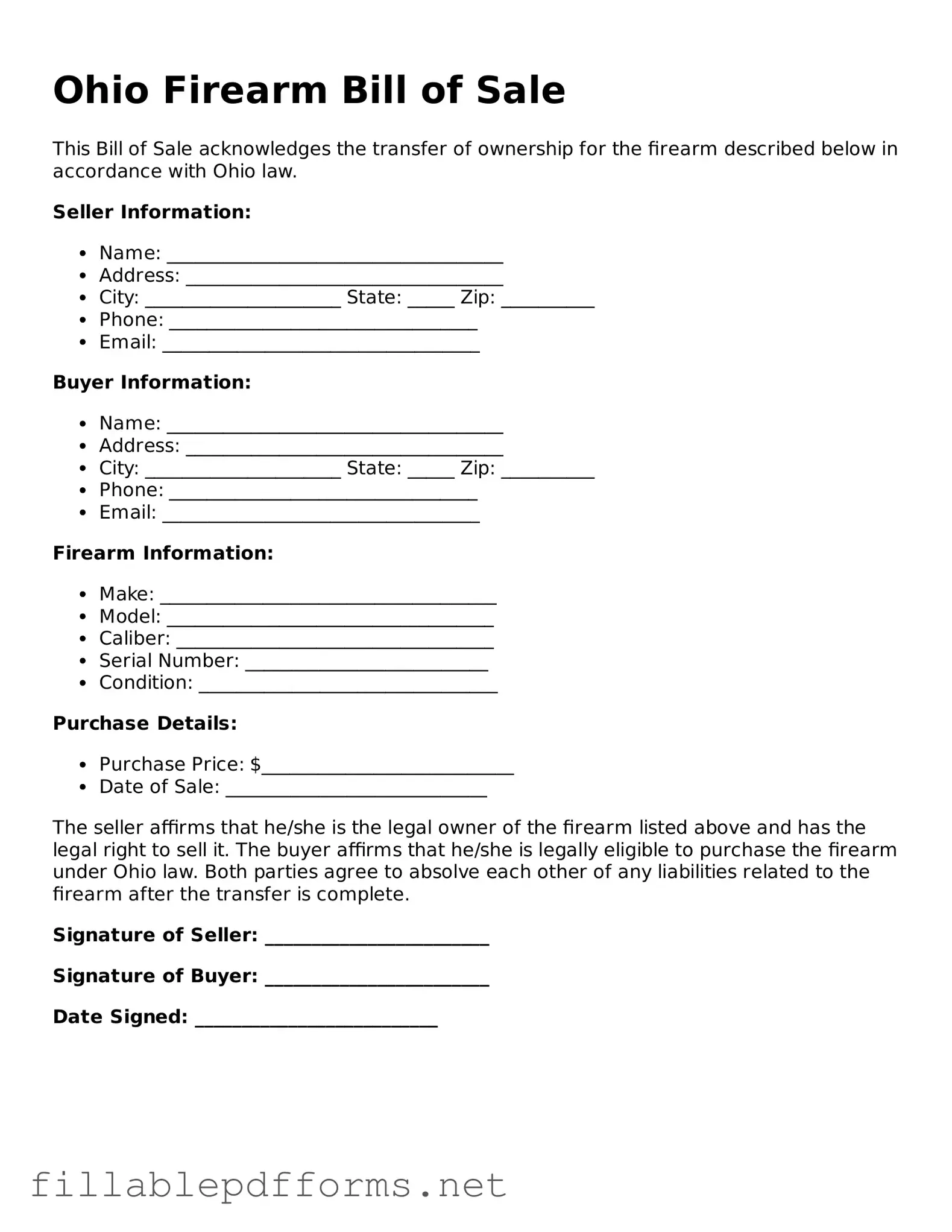Attorney-Verified Firearm Bill of Sale Form for Ohio State
The Ohio Firearm Bill of Sale form is a legal document that records the sale and transfer of firearms between individuals in Ohio. This form provides essential details about the buyer, seller, and the firearm being sold, ensuring both parties have a clear understanding of the transaction. By using this form, individuals can protect themselves and comply with state regulations regarding firearm ownership.
Launch Editor Here
